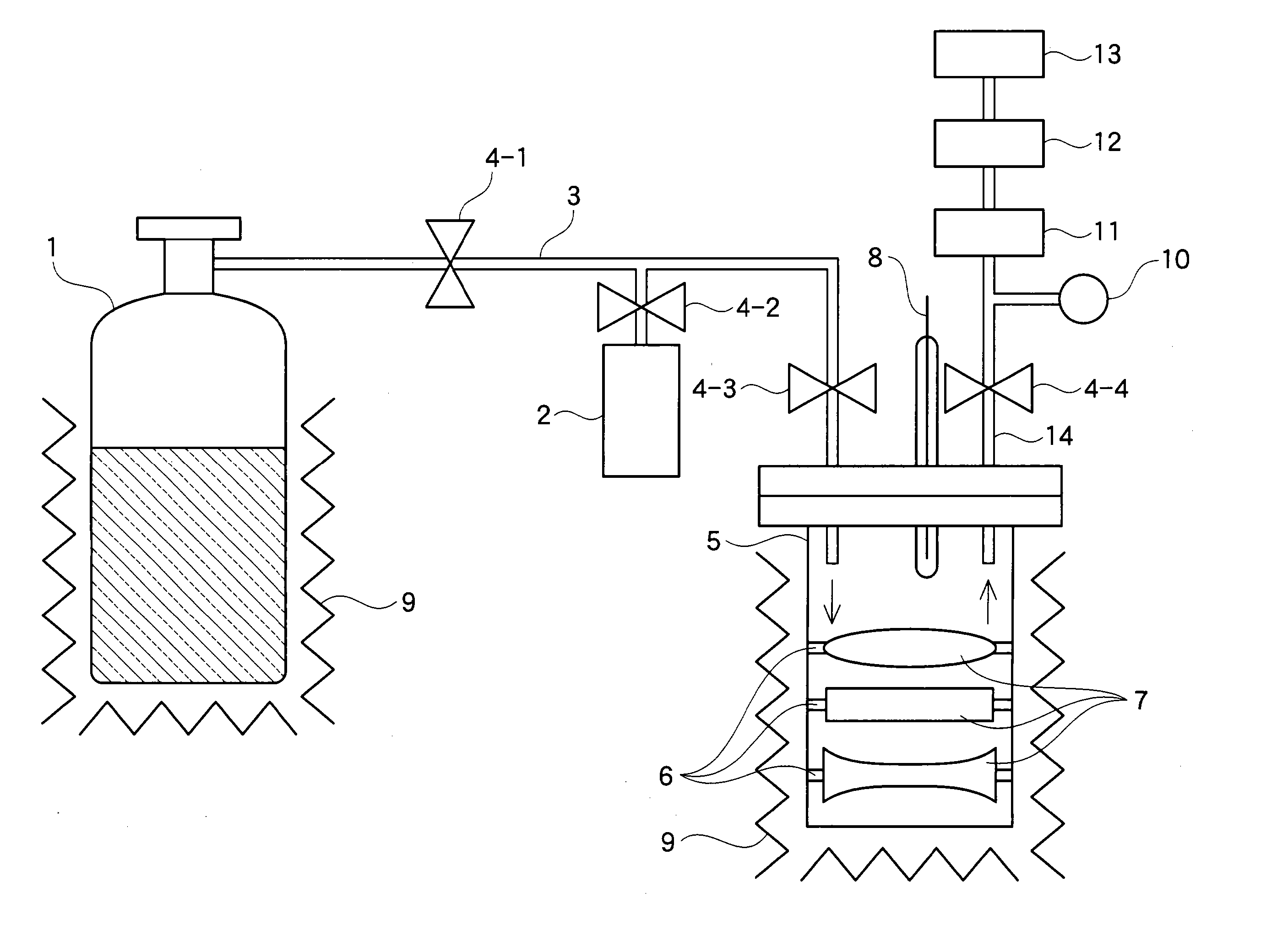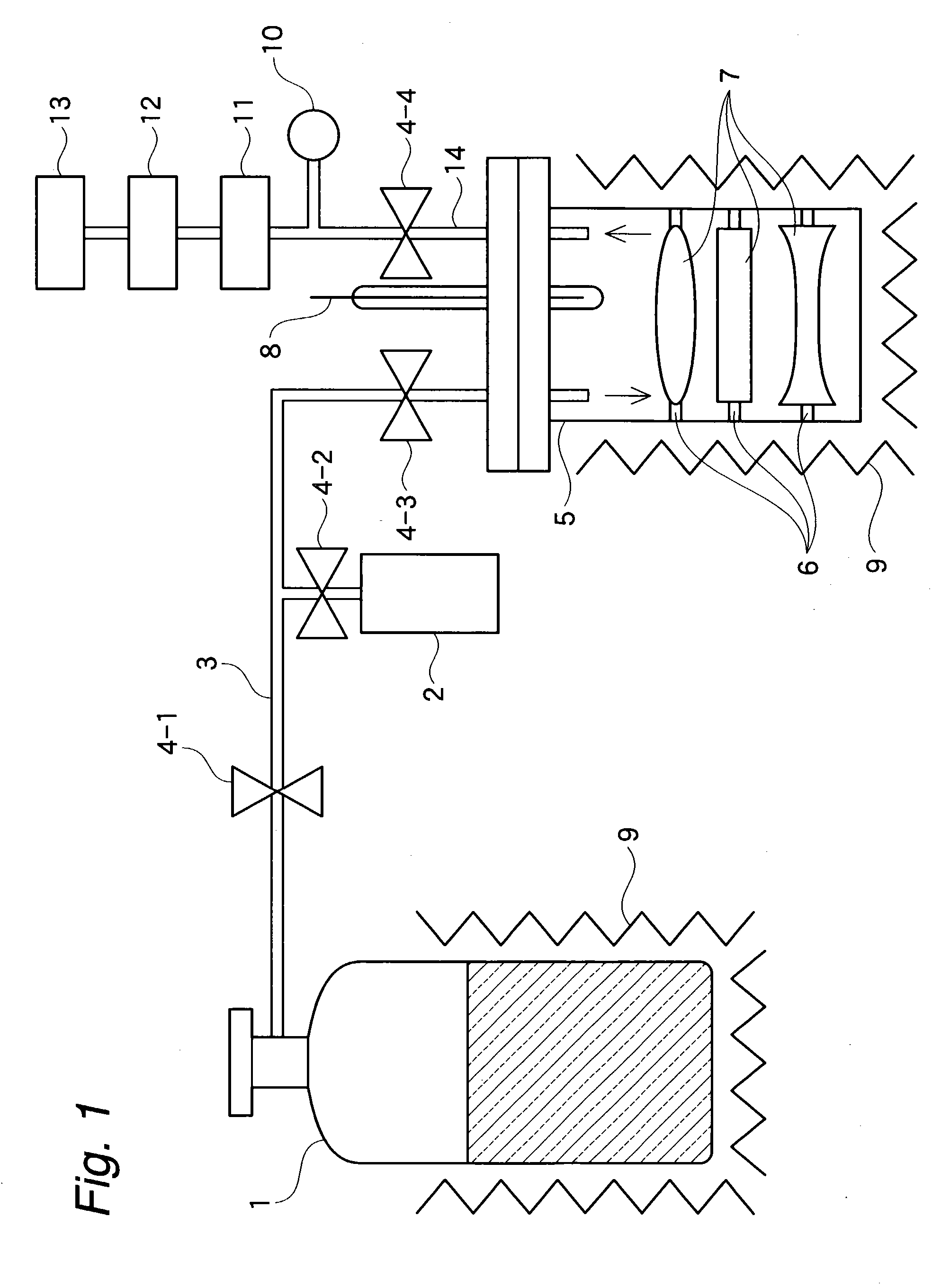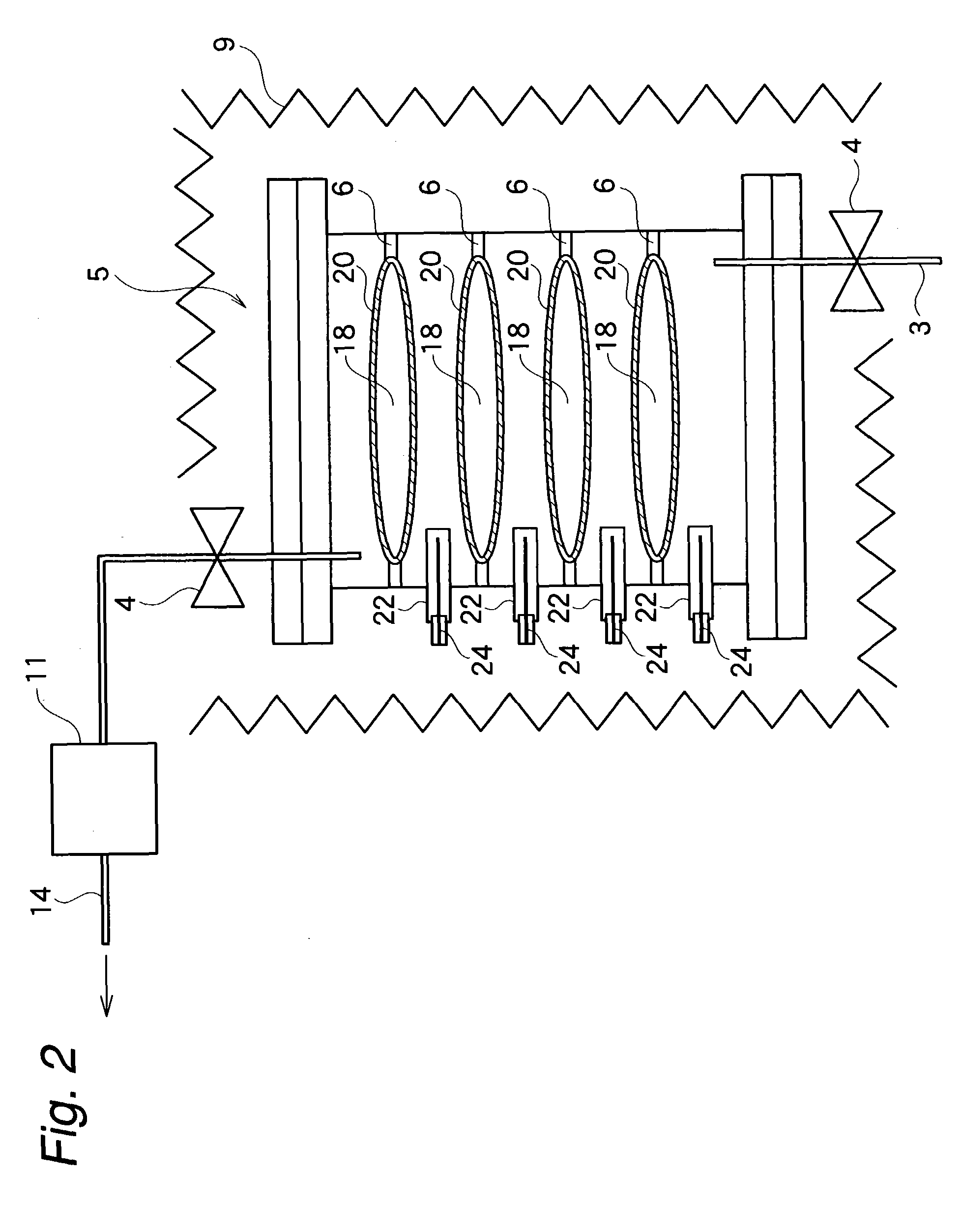Fluorination treatment apparatus, process for producing fluorination treated substance, and fluorination treated substance
a technology of treatment apparatus and treatment substance, which is applied in the direction of solid-state diffusion coating, halogenated hydrocarbon preparation, organic chemistry, etc., can solve the problems of unable to achieve the desired image formation performance, and prolonging the exposure time. , to achieve the effect of enhancing the transmittance in the vacuum ultraviolet region and reducing the fluorine deficiency of a substan
- Summary
- Abstract
- Description
- Claims
- Application Information
AI Technical Summary
Benefits of technology
Problems solved by technology
Method used
Image
Examples
example 1
[0244] In this example 1, a fluorination apparatus having a structure as shown in FIG. 1 was used and in a gas pipe 3 and an exhaust pipe 14, as shown in FIG. 1, a monel metal alloy of a nickel-copper alloy was used for a material of a section from a reactor 5 to a valve 4-4. Stainless steel valves 4-1, 4-2, 4-3 and 4-4 were dismantled and gas-contacting portions of the valves were subjected to nickel-plating so that chromium and fluorine were not contacted. By the nickel-plating, the whole fluorine gas feeding system and reaction system were completely chromium free. Samples prepared by film forming each of MgF.sub.2 and LaF.sub.3 single layer films in a film thickness of 150 nm onto a fluorite substrate were used. In a fluorination reaction step at 100.degree. C., 100% fluorine gas was fed. That is, dilution with helium was not conducted. In a subsequent heating step at 300.degree. C., fluorine gas containing 10 ppm of fluorine prepared by diluting with helium gas was introduced. ...
example 2
[0258] Utilizing the completely chromium-free experimental facility prepared in Example 1, a F.sub.2 lithography antireflection film was fluorinated. With regard to an optical element prepared by forming the antireflection films comprising MgF.sub.2 and LaF.sub.3 alternate layers on the both surfaces of a parallel and plat fluorite substrate having a thickness of 3 mm, the results of measuring a spectral transmittance are shown in FIG. 5. It was easily found that the transmittance in the vacuum ultraviolet region of a wavelength of less than 185 nm was really improved by conducting the fluorination with heat according to the present invention. With shortening the wavelength, a marked difference between the conducting of the fluorination with heat or not was recognized. The difference of the transmittance in the wavelength of 157 nm was 4%. Only one optical element had a 4% transmittance difference. Therefore, when all of the optical elements of a semiconductor exposure apparatus com...
example 3
[0260] Single crystal fluorite of calcium fluoride (CaF.sub.2) was processed to be in a parallel flat shape. The surface precise polishing (final polishing) of the single crystal fluorite was carried out by buff polishing with suede cloth dusted with a suspension prepared by dispersing silicon dioxide (SiO.sub.2) polishing abrasive grain in water to prepare a fluorite optical element having a polished surface. The resulting fluorite optical element was sucesssively washed with a neutral detergent, distilled water and isopropyl alcohol in a conventional method and thereby polishing abrasive grain and organic matters remained on the surface of the fluorite optical element were removed.
[0261] Subsequently, using a fluorination apparatus (washing apparatus) as shown in FIG. 1, the fluorite optical element was fixed to a fluoride optical element-fixing jig 6 made of pure nickel provided inside a reactor (cleaning vessel) 5 made of pure nickel and thereafter the cleaning vessel 5 was seal...
PUM
| Property | Measurement | Unit |
|---|---|---|
| temperature | aaaaa | aaaaa |
| temperature | aaaaa | aaaaa |
| total pressure | aaaaa | aaaaa |
Abstract
Description
Claims
Application Information
 Login to View More
Login to View More - R&D
- Intellectual Property
- Life Sciences
- Materials
- Tech Scout
- Unparalleled Data Quality
- Higher Quality Content
- 60% Fewer Hallucinations
Browse by: Latest US Patents, China's latest patents, Technical Efficacy Thesaurus, Application Domain, Technology Topic, Popular Technical Reports.
© 2025 PatSnap. All rights reserved.Legal|Privacy policy|Modern Slavery Act Transparency Statement|Sitemap|About US| Contact US: help@patsnap.com



